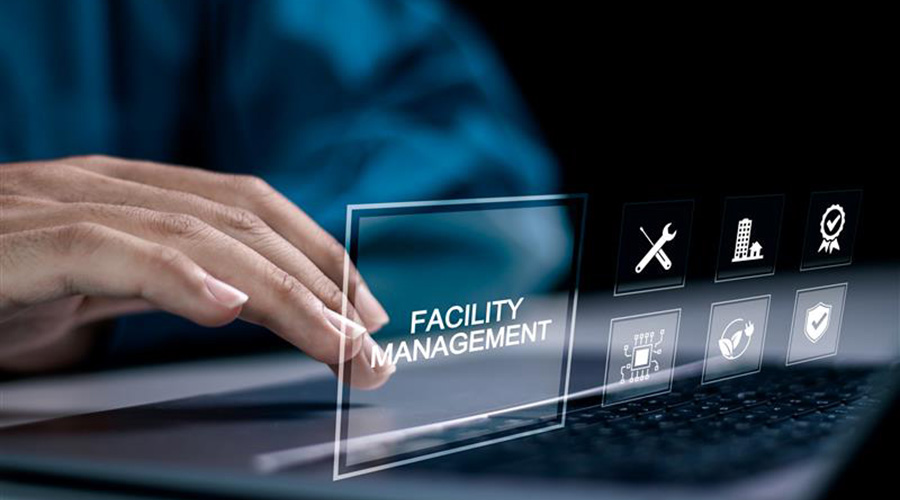Finding a Space In a Facility Career
Facility executives discuss the skills and resiliency needed to SURVIVE and EXCEL in today’s market
When Bill Yontz interviewed with the president of one of the nation’s largest financial institutions, neither person was interested in hearing about how the other would improve stock value, asset value or any other monetary measure.
Instead, the president of Capital One wanted to know what Yontz would do if the company’s facilities — all 5 million square feet of them — were laboratories.
That was enough to lure Yontz.
“I came here because the company sounded like an exciting place to be,” Yontz said in an interview before his recent retirement. “They made it clear how important the workplace was to associates.”
Over the past five-and-a-half years, Yontz made it clear how important facilities are to him and how important a role physical space and property can play in helping an organization meet its goals.
As the retired vice president of corporate real estate for Capital One, Yontz initiated facility improvements aimed at giving employees the type of space they need to function productively. And he did it without eschewing the financial needs of the company’s investors.
“We care a lot about costs,” Yontz said, “but we care equally as much about the workplace.”
Yontz embodied many of the skills necessary for facility executives to excel in today’s business environment. They should understand finance. They should be excellent communicators. And they should know the importance of responding to occupant needs and of making changes so the building can help employees do their jobs.
Thinking Big
Effective facility executives have the ability to think — and work — at levels that allow them to relate to the CFO. They are people who think big — big enough to influence a multibillion-dollar corporation’s bottom line — yet small enough to understand that a couple degrees temperature difference in a room can make or break an employee’s productivity on any given day.
At Capital One, no task was too small for Yontz, or for the 650 facility staff people and vendors he oversaw, to worry about. From offering input on property acquisitions to assuring that copy machines were in good working order, Yontz saw almost everything he did as improving the well-being of occupants.
“We want to create a vibrant workplace and make sure that everybody’s basic needs are met so they can be as productive as they can,” he said.
Given the current state of the economy and the intense pressure on facility executives to add value to an organization, it’s no surprise that sort of perspective is the one that gets noticed.
“Everyone’s talking about asset management,” says Larry Vandenberg, executive director of the Building Owners and Managers Institute (BOMI), an educational institution. “From the $300-million building to the paper clip, everything is asset management.”
Changing With The Times
Facility executives nowadays are vastly different from those of yesteryear. Facility executives were once more likely to adjust the tension on belt drives than to be charged with relieving financial pressures brought on by facility expenses. Gone are the days when a senior-level facility executive was somebody who knew building systems inside and out, and happened to carry a calculator in their hip pocket. Now, financial skills are essential and knowing how to operate building systems is secondary.
That change is one that has allowed people like Yontz to reach the top of their field. They don’t manage properties. They manage portfolios.
Jeff Nelson, manager of real estate and facilities for Seagate Technologies, a California-based computer hard disk manufacturing firm, oversees 5 million square feet of space in Asia, 4 million in North America and 1 million in Europe.
He says his biggest challenge is maintaining asset flexibility — the ability to sell or acquire properties as needed to meet a change in direction by the company. When asked by the chief financial officer, Nelson has to know the terms of leases, the options of renting versus owning and the ramifications of long-term commitments on the company’s financial position.
He considers himself an extension of the company’s financial arm when it comes to advising senior financial officers on facility issues.
“The CFOs and finance people are good, but they don’t understand facilities as well as they should to make long-term decisions,” Nelson says.
But financial savvy, no matter how important to facilities, isn’t enough. It is just one of the characteristics necessary for him and other facility executives to excel in today’s environment. Communication skills are key, and so is a more intangible trait that Yontz calls visibility — making sure that facility executives make their business plans and needs known to senior management.
That takes more than just an occasional memo or an annual request when budgets are formulated. Rather, it takes knowing how to communicate in financial terms that company officers understand and reminding them that facility needs should be addressed in corporate strategy sessions.
Creating awareness about the work a facility department does and what it has accomplished is a balancing act. On one hand, waving the flag too strenuously could gain a facility executive the reputation equivalent to the boy who cried wolf. On the other hand, not calling attention to what needs to be done or what has been accomplished can leave a facility executive on the outside looking in.
That’s a line that Mary Beardmore, director of facilities management at ShopKo Stores Inc., says facility executives must tread carefully. Last year, Beardmore was selected to lead an initiative to establish a corporate procurement department to purchase nonmerchandise goods — retailese for everything that isn’t sold in the stores. But as she returns to her facility management career this year — providing facilities management for 364 stores, five distribution centers and two corporate headquarters — she’ll try to remember a mantra among facility executives.
“There’s a saying in the profession that if everything is going well, you’re probably doing your job well,” she says. “That’s a plus and a minus because it’s not readily apparent that it takes a lot of effort by a lot of people to keep a building up and running 24-7 if everything always goes smoothly.”
Staying Relevant
In the past, “going smoothly” meant that temperatures were comfortable, floors were shiny and the roof didn’t leak. In the future, it will take more.
Vandenberg of BOMI recently authored a paper regarding the future of today’s facility executive. His conclusions paint a picture in which technology-oriented facility executives who are concerned merely with the operations of a building are left searching for relevance. More financially focused facility executives will be the ones positioned to add value to organizations because of their ability to manage portfolios.
Organizations will be increasingly interested in outsourcing facility management to providers who are able to manage portfolios as well as facility operations, Vandenberg says. He sees an opportunity for the creation of large, regional property management firms in addition to the national firms that already exist. Corporate facility managers are likely to find themselves working for one of those portfolio management firms as companies move away from staffing in-house facility expertise.
“I’ve championed the importance of an in-house facility corporate manager for 25 years,” says Vandenberg. “So when I first wrote that on paper and looked at it, I said, ‘My God, this is heresy.’ ”
Vandenberg’s point is that facility executives who can manage everything from the largest of transactions to the smallest of operational details are best suited for the future.
“Organizations want somebody who can integrate top-level decisions with how to move boxes,” he says.
Being Aware
Part of the reason for the change has to do with the litigious nature of today’s society. Vandenberg says facility managers who focus solely on operations are missing the big picture of what can bring an organization to its knees.
“If a building owner or corporation is being sued for millions of dollars because of poor indoor air quality brought on by mold,” he says, “is anybody going to care about food service or custodial cleaning?”
The outsourcing opportunities of which Vandenberg speaks have their roots in the early ’90s when the mantra of corporate America was to focus on nothing but core competencies. That resulted in the outsourcing of a growing number of operations within a company that didn’t create revenue — facilities included.
While that meant some corporate facility executives were left searching for jobs, it created opportunities for people like Steve Peterson.
Peterson spent 14 years working for a national real estate management firm. Business for such firms boomed in the early ’90s as corporations and building owners turned to service providers to manage both the operations and financial performance of buildings.
As vice president of operations engineering services, Peterson supported the company’s corporate staff efforts to develop programs. He also oversaw quality control for the company.
With the recent economic hard times, however, Peterson’s position was eliminated, prompting him to take on some consulting work. Still, his confidence in the outsourcing market hasn’t waned. He echoes Vandenberg’s lesson to facility executives: get the communication and financial skills necessary to work and compete with outsourcing firms.
“There are a lot of corporations that developed as a result of outsourcing,” he says. “It’s created a lot of opportunities in facility management.”
Some opportunities, he says, are in nontraditional roles. Banks, credit unions and other financial institutions, for example, have been hiring firms to manage automated transaction machines. With thousands of ATMs scattered across the country, facility service firms are eager to acquire the expertise necessary to maintain the ATM sites.
Creating Value
Despite the tendency for outsourcing facility and real estate services, there are still plenty of corporations that want to keep the facility function in-house. For them, there are people like Bob Dickhaus, president and chief executive officer of FM Solutions.
As a facility management consultant, Dickhaus plies his trade to senior-level managers interested in bringing facility executives to the next level, so to speak.
He sees creating efficiencies in facility operations — where it might first seem there are none to be created — as one of the biggest challenges facing facility executives. Consider, for example, a corporation with decentralized facility operations. While managers at individual sites are responsible for the day-to-day operation of buildings, it might take a facility executive at headquarters to pull together a way to centralize certain decisions.
Doing so might not only help treat the properties as a portfolio as opposed to individual buildings, but also could lead to costs savings. Consider the efficiencies that could be created by purchasing goods and services used by all the buildings through a centralized operation.
“Facility managers have a great opportunity,” Dickhaus says. “If they can cut seven or eight figures from expenses, that’s a career-maker.”
Looking Ahead
While finances are important, they’re not the only thing. There are soft issues as well. For some companies, the focus is productivity. For others, it’s employee satisfaction. For Yontz and Capital One, it’s gathering data, evaluating it and making better decisions based on its analysis.
Yontz envisions the day that facility executives will be able to look at a corporation’s property portfolio, the probabilities within real estate markets and the financial conditions of business as a whole and make high-level decisions. By analyzing those numbers, he said he thinks it’s possible to quantify the risks of building new space or renovating space to determine which presents the lowest risk and greatest return on investment given the anticipated business and real estate conditions.
Even now, however, facility executives can still apply data analysis to work on the soft issues. Yontz implemented a system that allows the corporate real estate department to gather feedback on virtually any topic related to facilities, satisfaction and productivity. These are more than just run-of-the-mill questionnaires. These are scientific surveys with valid sample sizes aimed at getting at what it is — or what it could be — that drives occupants.
“We’re really excited about the possibilities,” Yontz said. “We think that some of what we will know is that if we make certain changes, we’ll know what the impact will be on productivity.”
Spoken like a true scientist, who happened to use facilities as his lab space.
Related Topics:











